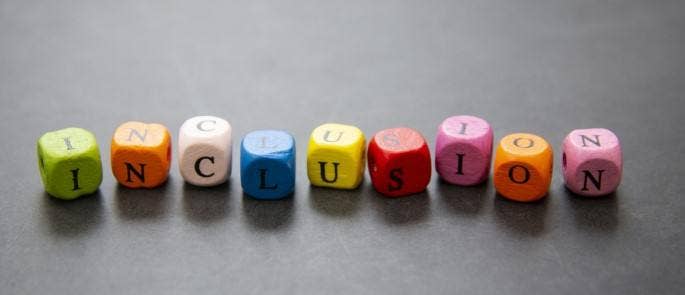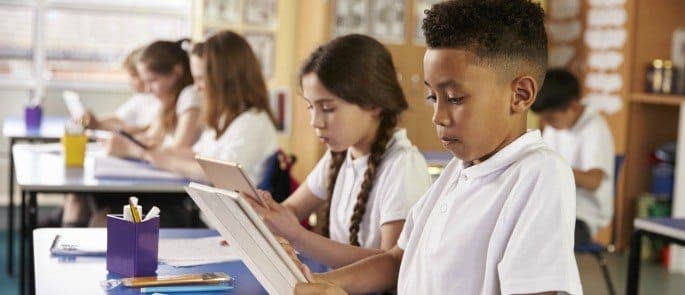How to Promote Equality, Diversity & Inclusion in the Classroom
Promoting equality, diversity and inclusion (ED&I) in the classroom and beyond should be a cornerstone of effective teaching practice and a leadership priority. All children are entitled to a high-quality education in a nurturing and inclusive environment, where all can thrive, make progress and fulfil their potential.
Making sure that settings meet their equality, diversity and inclusion responsibilities is also a key element of the Ofsted Education Inspection Framework. It impacts all areas of key judgement applied to schools (quality of education, behaviour and attitude, personal development and leadership and management) – as detailed in their ED&I statement.
In this article, we will consider what equality, diversity and inclusion means, the legal requirements for schools relating to it, and provide some strategies to promote ED&I, at both a whole-school and classroom level.
What is Equality, Diversity and Inclusion?
Whilst equality, diversity and inclusion are closely related, and often discussed as a single concept, it is useful to consider the individual terms and their meanings.
- Equality – means that everyone is treated the same, is treated fairly and has the same opportunities. Equity is slightly different from equality in that it recognises that each person has different circumstances. This means that varying types or levels of support might be required, depending on individual need, to take full advantage of equal opportunities.
- Diversity – means recognising, respecting and welcoming everyone’s different backgrounds, identities and experiences. Promoting diversity celebrates people’s differences and uniqueness.
- Inclusion – means that everyone is encouraged to retain their uniqueness, they aren’t singled out for being different, and have a sense of belonging and being valued.
Diversity is being invited to the party. Inclusion is being asked to dance.
Verna Myers
Inclusion importantly goes a step further than diversity. Promoting diversity is sometimes criticised as a tick-box exercise, often driven by data. For example, a school could claim to be ‘diverse’ based on numbers of pupils and staff who meet a certain criteria. However, if a school is truly inclusive, then they ensure that every member of that diverse community is nurtured, celebrated, and feels secure and included within the school community.
Interested in Learning More?
We offer an online course on Equality and Diversity which has been designed to help learners understand more about their responsibilities for promoting equality and diversity. You can also take a look at our CPD Courses for Teaching Staff where you’ll find everything from Challenging Behaviour Training to Online Safety & Harms.
Why is Equality, Diversity and Inclusion Important?
Promoting equality, diversity and inclusion in education is essential for both staff and students. Not only is it a legal requirement, but every member of the school’s community is entitled to a learning and working environment where they can thrive together and celebrate their uniqueness.
The Equality Act 2010
The Equality Act brought together a range of anti-discriminatory laws, and covers all of Great Britain. It offers protection from discrimination, harassment and victimisation for nine specific personal characteristics – known as protected characteristics under the law.

Protected Characteristics
The protected characteristics are:
- Age.
- Disability.
- Gender reassignment.
- Marriage and civil partnership.
- Pregnancy and maternity.
- Race.
- Religion or belief.
- Sex.
- Sexual orientation.
The Act makes it unlawful for a school to discriminate against, harass or victimise a pupil or potential pupil. This includes:
- In relation to admissions.
- In the way that it provides education for pupils.
- In the way that it provides pupils access to any benefit, facility or service.
- By excluding a pupil or subjecting them to any other detriment.
The Equality Act also protects those discriminated against through association or perception – for example, a pupil discriminated against due to a parent’s religious belief or due being perceived as LGBTQ+.
Positive Action
Schools should carefully consider how they are supporting their pupils and students with regard to particular protected characteristics. Provisions within the Act allow schools and colleges to take proportionate, positive action, to deal with particular disadvantages affecting students with a particular protected characteristic.
This includes a duty to make reasonable adjustments for disabled children and young people (including those with long-term conditions). Positive action could also include providing support for a group of students who share a protected characteristic.

The Public Sector Equality Duty (PSED)
State-funded schools and colleges are subject to The Public Sector Equality Duty (PSED) found in the Equality Act.
The PSED means that schools and colleges have a duty to:
- Have due regard to the need to eliminate unlawful discrimination, harassment and victimisation (and any other conduct prohibited under the Equality Act).
- Advance equality of opportunity and foster good relations between those who share a relevant protected characteristic and those who do not.
The PSED helps schools and colleges to focus on key issues of concern and improving pupil and student outcomes. Keeping Children Safe In Education (KSCIE) guidance stresses the importance of obligations under the PSED in relation to safeguarding – reminding settings to be mindful that some pupils or students may be more at risk of harm from specific issues such as sexual violence, homophobic, biphobic or transphobic bullying or racial discrimination.
You can access the Equality Act 2010 here, DfE guidance, The Equality Act 2010 and Schools, here and our article, Keeping Children Safe in Education: Key Changes, here.
Intersectionality
The term intersectionality refers to possessing multiple characteristics, which often overlap.
Intersectionality is about having a mix of identities and how these might combine to create different types of discrimination or privilege, and it’s important to consider when looking to promote equality and inclusion for everyone.
Those with intersectional identities can be more vulnerable to discrimination, and may experience discrimination differently. For example, a Muslim pupil who is bisexual may face different issues to a bisexual pupil with disabilities.
How Can Equality Be Promoted at School?
As we have seen, promoting equality, diversity and inclusion should be a clear priority within schools and should be something that all children are familiar with from an early age.
Promoting Equality, Diversity and Inclusion at a Whole-School Level
An ethos of, and true commitment to, equality, diversity and inclusion should be embedded in the school culture, and a core part of creating a positive learning environment.
This should include:
Setting clear expectations – a school’s policies and procedures (including behaviour policies, anti-bullying policies, staff code of conduct, etc.) should clearly state the expectation that everyone is to be treated fairly and equitably.
Challenging negative attitudes – the school should have a clear policy with regards to discriminatory behaviour and language. This should never be dismissed as banter.

Support strategies – there should be strategies in place to encourage anyone to come forward if they are experiencing or witnessing anything that violates the school’s commitment to equality, diversity and inclusion.
Creating an inclusive culture – including whole school representations of diversity can be a powerful tool to promote inclusion. This can be done in a multitude of ways – from the images and posters used around school, to the religious and cultural events that are recognised, to the uniform policy.
Awareness weeks and days can aid this but care should be taken that the implication is not of a short-lived nod to diversity rather than embedding true inclusivity.
Providing effective training – all staff should be trained in equality and diversity. This could include explicit Equality, Diversity and Inclusion training, but also training that illustrates how important inclusion is for all aspect of education, including provision for Special Educational Needs and/Disability, safeguarding topics such as Harmful Sexual Behaviour and Preventing Radicalisation and Extremism, and Mental Health and Wellbeing.
Reflecting inclusion in the curriculum – exploration of topics such as celebrating difference, recognising and avoiding stereotypes, prejudice and discrimination form key parts of many statutory programmes of study at all key stages – most notably relationships education, sex and relationships education, and health education.
A spiral curriculum where these topics are returned to, and built upon, over the course of a school career means that children’s understanding will deepen and develop over time. So, in Year 1, a topic might look at what makes us special, building to sophisticated debate regarding challenging discriminatory language online in Year 12.
As well as explicitly teaching these topics, schools can go further by ensuring representation of diversity across the wider curriculum. It is incredibly important that children and young people see themselves and their experiences reflected positively in the texts and resources they encounter.

For example:
- Make sure English texts include a diverse range of characters – including those from different cultures and ethnic groups, different family groupings, characters with disabilities, LGBTQ+ characters, etc.
- In history, music, art and PE include a focus on key figures who represent diversity.
Seeking out feedback – it is not enough to implement inclusive strategies, you need to actually make sure that pupils and staff feel included. Use pupil voice or staff surveys, school councils, peer support groups, etc., to regularly check in to see if staff and students feel that the setting is meeting their needs in terms of inclusivity. Use those opportunities to welcome suggestions as to what more could be done.
Promoting Equality, Diversity and Inclusion at a Classroom Level
Against a backdrop of an inclusive whole-school culture, there is a great deal that can be done to promote inclusion at a class or lesson level.
Think about representation in the resources
Make sure the resources you use reflect diversity. Try to evaluate the resources that you have through an inclusion lens and then aim to further improve inclusivity. This could include anything from:
- Stories shared with learners – are they representative of a range of identities, circumstances and cultures?
- Dolls/small world toys – do they reinforce gender stereotypes? Are a range of skin colours represented?
- Colouring equipment – do you provide a range of skin tones for children to use?
- Maths/science problems – for example, if you are writing maths problems, make sure you reflect diversity in the pronouns, names and scenarios which feature.
You can make use of advice regarding inclusive resources from organisations such as The Book Trust or Stonewall.
Even relatively small, simple tweaks can improve the inclusivity of your resources.

Adapt your practice
The SEND Code of Practice requires all teachers to differentiate and personalise teaching and learning to meet the needs of children and young people with special educational needs and/or disabilities. Good teaching practice should include using a variety of teaching and assessment methods, as well as accessible resources to ensure all pupils can access the learning opportunities.
This should be driven by the actual needs of the individual learner. Supporting pupils with SEND might include strategies such as rephrasing questions, considering sensory needs when organising classroom spaces, building movement breaks into your lessons, and providing materials in a variety of different formats to suit different learners’ needs, to name but a few.
Our training course, Special Educational Needs and Disabilities in the Classroom looks at teaching in an inclusive way, in detail.
Celebrate the diversity of your students
Get to know your pupils and try to reflect their uniqueness. This could be as simple as having ‘hello’ written on the door in all the languages spoken in the class – or asking children to create class displays illustrating something unique about them.

Be mindful of your language
It is important that teachers model inclusive language. Whilst staff would always avoid language they know to be offensive or unacceptable, sometimes we might not recognise the implications of certain phrases or terminology. Phrases which are considered ‘everyday’ may actually carry assumptions that exclude some individuals. By being mindful of the implications of your language in class, you can help to promote inclusivity. Language evolves and although you might not always get it right, it is important to make the effort to model language that is as inclusive as possible.
For example, rather than:
- ‘Sit down guys’ opt for ‘Sit down everyone’.
- ‘Good morning boys and girls’ opt for ‘Good morning class’.
- ‘Tell your mum and dad’ opt for ‘Tell whoever is at home’.
- ‘The reason we celebrate Easter’ opt for ‘The reason some people celebrate Easter’.
Promoting equality, diversity and inclusion in the classroom helps to ensure that each student is able to learn in an environment where all aspects of their identities are recognised and respected, and where they feel safe and secure. By explicitly teaching about the importance of ED&I, and modelling commitment to it, schools are instrumental in empowering children and young people to live their lives in a way that is respectful, tolerant and inclusive.
Further Resources:
- Equality, Diversity and Inclusion Training
- How to Promote LGBTQ+ Inclusive Education in Schools
- How to Create a Positive Learning Environment
- What is Inclusive Practice?
- What is Adultification within Child Protection and Safeguarding?
- Educational Bias: How to Avoid Bias in the Classroom
- Prevent Duty Quiz
- The Prevent Strategy: Practical Tips for Managing Controversial Topics in the Classroom
- How to Help Others Promote Diversity, Equality and Inclusion
- How to Support EAL Students in the Classroom
- How to Spot Allergy Bullying
- Supporting Transgender Students in School: Guidance for Teachers
- Gender Dysphoria in Children: Guidance for Parents and Teachers












